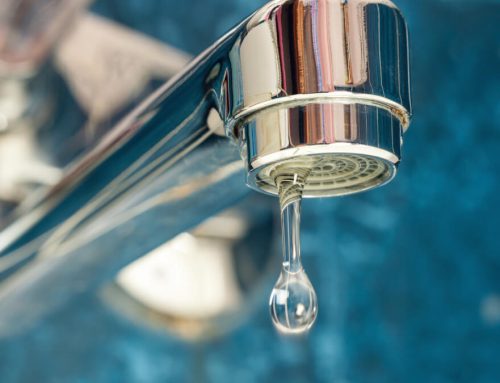
Common Water Softener Problems Phoenix Residents Face
In the Valley of the Sun, water hardness is a real concern. Aside from drying out skin and hair, it leaves deposits all over exterior walls, showers, dishes and even within plumbing systems. Since many Phoenicians invest a lot of time and money in hard water defense, we thought it would be a good idea to discuss some of the common water softener problems they run into.
But before we kick off our list of burdens, we wanted to remind property owners that every water filtration device is required to take in hard water. If you want your softening solutions to perform well and protect your appliances for a long time, they need to be properly maintained.
Water Softener Upkeep Is Important
Since water softeners are complex, any effort can go a long way. If you’re the type of person that doesn’t like to pay for routine plumbing maintenance, there are a few things you can do to preserve the performance of your equipment:
- First and foremost, the best way to prolong your water softener is to purchase high quality salts. Doing so helps you avoid clogs.
- If you don’t want to use top of the line products, then you’ll need to regularly check the system for blockages. If they’re not quickly removed, you can expect water softener problems like impeded functionality and low water pressure.
- Another way to dodge poor water pressure is to frequently clean and inspect the Venturi valve. If damage is ever found, these should be replaced immediately.
- Lastly, the use of a resin bed cleaner will do wonders for the lifespan and efficiency of your equipment. Even if your water softener self cleans during the regeneration cycle, keeping the resin bed in pristine condition is worth it.
Top Problems With Water Softening Systems in Phoenix, Arizona:
Since water systems and most appliances are hindered by water softener problems, a certified plumber should always be considered for diagnosis and repair. Even though a lot can be learned online these days, it doesn’t mean you’re equipped to handle certain tasks on your own. An experienced professional is almost always worth it in the long run.
1. Unused Salt and Salt Bridges
In a nutshell, a water softener is ironically designed to leverage salt (a mineral) in order to prevent other minerals and sediments from scaling on your plumbing fixtures and pipes. At the same time, the equipment can also be susceptible to the scaling of salt within the brine tank and system lines.
Like we mentioned before, low quality salt can cause salt bridges at the bottom of the tank that prevent crystals from dissolving. When this happens, there is no ions exchange because salt isn’t getting used. If water flow is blocked, the regeneration cycle won’t function and hard water can’t be softened. This essentially makes your system useless.
Consequences, Diagnosis and Solutions
Unaddressed salt bridges can cause a number of water softener problems and even damage your system. The easiest way to identify them is to observe salt levels in the brine tank. If they remain the same, then you may need to break up salt crust and clean up any build up on the tank’s edges.
If this doesn’t solve the issue then you’ll want to contact the manufacturer for troubleshooting tips.
2. Your Water is Extra Salty
Since water softeners use salt to alter the hard water in Phoenix, excessive saltiness can be easily attributed to some sort of system malfunction. You shouldn’t be able to taste it. In most cases, this means you’re putting too much salt into the brine tank. But sometimes, it’s the result of a clogged drain hose.
If the ladder is the root of the matter then you’re going to need to unclog it. When the regeneration process isn’t flushing the tank, water softener problems can be expected. Otherwise, revisist the system manual to see if you’re adding the proper amount of salt and try to monitor levels moving forward.
3. Strange Noises From the System
No matter what type of equipment you own, water softeners should never produce a lot of noise. They’re designed to operate in a near silent fashion – like a smooth running engine. While the regeneration cycle may catch your attention, it still ought to be relatively quiet. When this isn’t the case, something is definitely wrong.
Whether noises are simply unorthodox or flat out loud and annoying, a repair is more than likely imminent. Water softener problems like this tend to be caused by broken air valves, outdated timers or clogged water lines and valves.
Most experienced plumbers are easily able to determine which part is responsible for the noise and offer a solution in a timely manner.
4. A Leaking Water Softener
No matter the source (water lines, the tank or another component), a leak is one of the more serious water softener problems Phoenix residents face. If it were to go unnoticed and the water isn’t shut off, property damage can occur.
Moreover, locating a leak can be fairly tedious when the root of the problem isn’t obvious and you have to inspect every element of the system. No matter where the breach exists, a water softener leak typically derives from a poor installation.
Preventing Leaks in Softening Equipment
Error, laziness or the use of cheap materials will affect performance. So keep this in mind when you’re replacing one. Nonetheless, once the leak is detected, replacing the faulty part or administering the repair is normally pretty easy.
5. A System Motor Failure Occurs
When a water softening system randomly stops working, the most common reason is a failed motor. Since it requires electricity to operate, an unresponsive motor could be caused by damaged cables or faulty cords. But this is highly uncommon.
If you run into a problem like this, then you can count your options on a few fingers. Unless your water softener is under a warranty that covers parts, you’re going to have to repair or replace the motor. However, neither option is very affordable.
Prevent Phoenix Water Softener Problems
When equipment is nearing the end of its lifespan, most people just replace the system. But this can be a tough call if the softener is fairly new. Either way, if you don’t want to deal with a failed motor, then routine maintenance, quality service and proper handling is key. This is a large expense that can be avoided.
6. Excess Water In the Salt Tank
One of the most common water softener problems in Phoenix is a salt tank full of water. While this is normally the result of clogs or overflow disruptions, finding certainty before taking action is important. Since there are a number of potential causes in this type of scenario, considering all of them is important.
Check the Floating and Water Entry Valves
If the softener’s floating valve is set too high, then a surplus of water will accumulate in the salt tank. Since this component is used to control the level of water within the compartment, a lower setting may help the system release water more efficiently.
A broken water entry valve that isn’t stopping the water from filling the tank will eventually create the same problem. The good news is, once it’s spotted and identified as the sole cause, the solution is cheap and easy. All you have to do is replace the lid.
Sometimes, a Softener Replacement is Needed
An outdated water softener that’s passed its prime can also be the reason for excess water in the salt tank. Most models have a peak lifespan of 10-12 years. After this mark, they tend to decline quickly. This is when a majority of water softener problems occur.
Even if you don’t know the age of your system, worn components, a damaged o-ring and cracks in the tank should tell you dependability is fleeting. If you value quality water, then you’re going to want to have a plan to address an aging system.
7. Water Softener Won’t Stop Running
Metaphorically speaking, your water softener should only go for a jog from time to time. This helps it regenerate. When it’s constantly running, the system is stressed and it’s overworking because something isn’t right. Since burnout is inevitable, you’re going to want to figure out why it won’t stop.
In most cases, your equipment continues to run because it’s unable to draw brine from the tank. Like other water softener problems, salt bridges tend to be the cause. Low water pressure and sediment build-up in the water lines can also play a role in a persistent regeneration cycle.
Simple Reasoning for Why it Won’t Turn Off
After inspecting their water softeners, some of our customers realize system settings were altered or a broken switch kept it running. Households with children tend to experience this the most. Proper care is especially important for families.
If the problem goes unnoticed for some time, performance will diminish. Unless you replace the whole control head, repairs are pretty simple. So check your equipment regularly and take care of concerns before they turn into a bigger issue.
8. Regeneration Is Not Occuring
At the end of the day, you’re going to run into water softener problems if it’s not taken care of. In order to function properly, the system needs to go through a regeneration cycle that lasts about 80-90 minutes. This flushes out bad minerals and sediments from the hard water. When this doesn’t happen water isn’t softened.
Faulty Timers and Hard Water Residue
The main cause of a malfunctioning regeneration cycle is a faulty regeneration timer. When this element isn’t working, the water softener doesn’t know when to start the cycle. You can easily test the timer by setting it on a daily schedule and listening for regeneration to begin at the set time. If it turns on, there’s a different problem.
The cycle may also stop working when there’s build up on components and general clogs exist. Even though you may hear the sound of a functioning process, it doesn’t mean the softener is completely flushing out the water. To address this, try cleaning out the tubes and components – especially if the soft water is extra salty.
9. Brown Water Coming From the Faucet
After investing in a purification system, the last thing you expect is dirty water. While it’s not exactly one of the most common water softener problems, accumulated bacteria within the tank will cause a faucet to spew brown water.
At the same time, worn down water lines or excessive amounts of sediment and dirt in the water feed could also be the cause. Either way, it’s never a bad idea to perform a process of elimination by cleaning out your softening system.
How to Sterilize a Water Softener Issue
Just to be sure, try adding two cups of sterilizer to the brine tank and run three regeneration cycles before flushing out your plumbing. If your water is still brown, then you’ll want to reach out to a plumber and contact the utility company.
A Quality Plumber Always Cares
A trustworthy relationship with a quality provider helps most Phoenix residents sidestep water softener problems. If you’d like to talk to someone about a plumbing system in your home or business, one of our certified professionals is only a phone call away!

